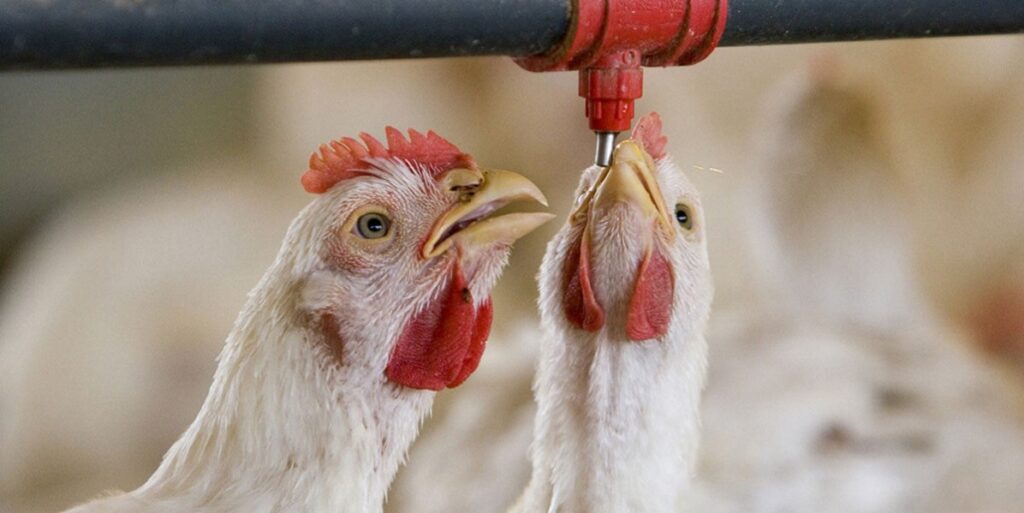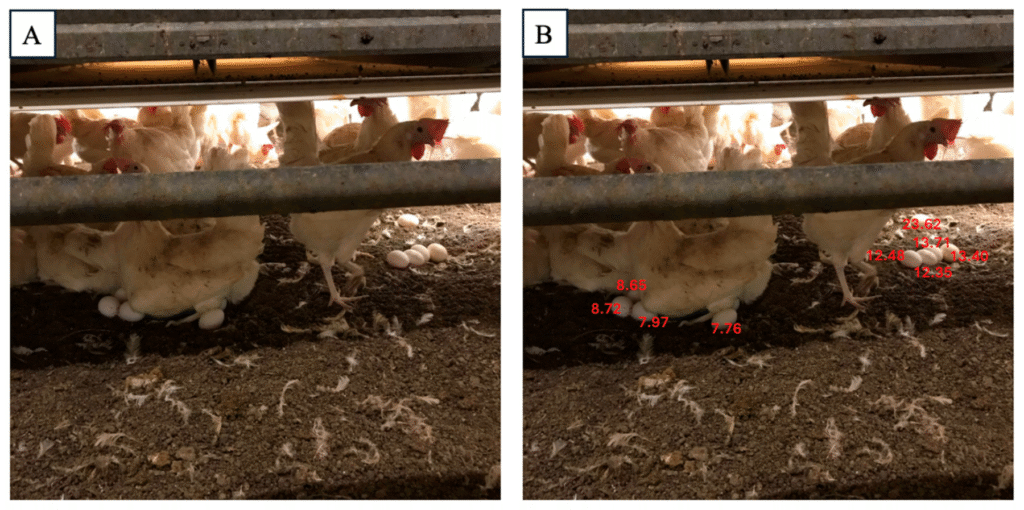Poultry behaviors such as drinking and feeding are critical for evaluating animal welfare and health. In commercial poultry houses, there are thousands of chickens in a flock, which makes monitoring individual behavior such as drinking and feeding challenging. In recent years, artificial intelligence (AI) has significantly impacted agriculture, particularly with the development of deep learning models for monitoring and automation. This study focuses on evaluating the Depth Anything Model (DAM), a cutting-edge monocular depth estimation model, for its potential in poultry farming. DAM leverages a vast dataset of over 62 million images to predict depth using only RGB images, eliminating the need for costly depth sensors.

Figure 1. Chickens in drinking (Photo Credit: Zinpro).
Researchers at the University of Georgia assessed DAM’s ability to monitor poultry behavior, specifically detecting drinking patterns in research poultry houses. The team also evaluated its effectiveness in managing operations, such as tracking floor eggs.

Figure 2. Pipeline for the deep anything model applied in poultry science for monitoring and analysis (S means strong perturbations).
Additionally, the team evaluated DAM’s accuracy in detecting disparity within cage-free facilities. The accuracy of the model in estimating physical depth was assessed using Root Mean Square Error (RMSE) between predicted and actual perch frame depths, yielding an RMSE of 0.11 meters, demonstrating high precision. DAM demonstrated 92.3% accuracy in detecting drinking behavior (Figure 3) and achieved an 11% reduction in motion time during egg collection by optimizing the robot’s route using cluster-based planning.
To further explore the application of the DAM in cage-free egg production, we conducted tests using twenty images consisting of commercial cage-free eggs with both white and brown shells, which represent the two main types of cage-free eggs. DAM demonstrated its capability to detect egg disparities effectively. For brown eggs, the disparities were measured at 2.24, 4.96, and 8.25. In the case of white eggs, the disparities were 7.76, 7.97, 8.65, 8.72, 12.35, 12.48, 13.40, 13.71, and 23.62 (Figure 4). These findings highlight DAM’s potential as a valuable tool in poultry science, reducing costs while improving the precision of behavioral analysis and farm management tasks.

Figure 3. The Depth Anything Model (DAM) for monitoring drinking behavior: (a) Original image, and (b) Detected actual drinking behavior.

Figure 4. Disparity detected by DAM (Depth Anything Model) in white-shelled cage-free eggs. (A) original image, (B) detected image showing.
Further reading:
Yang, X., Lu, G., Zhang, J., Paneru, B., Dhungana, A., Dahal, S., Bist, R. B., & Chai, L*. (2025). Tracking Poultry Drinking Behavior and Floor Eggs in Cage-Free Houses with Innovative Depth Anything Model. Applied Sciences, 15(12), 6625. https://doi.org/10.3390/app15126625